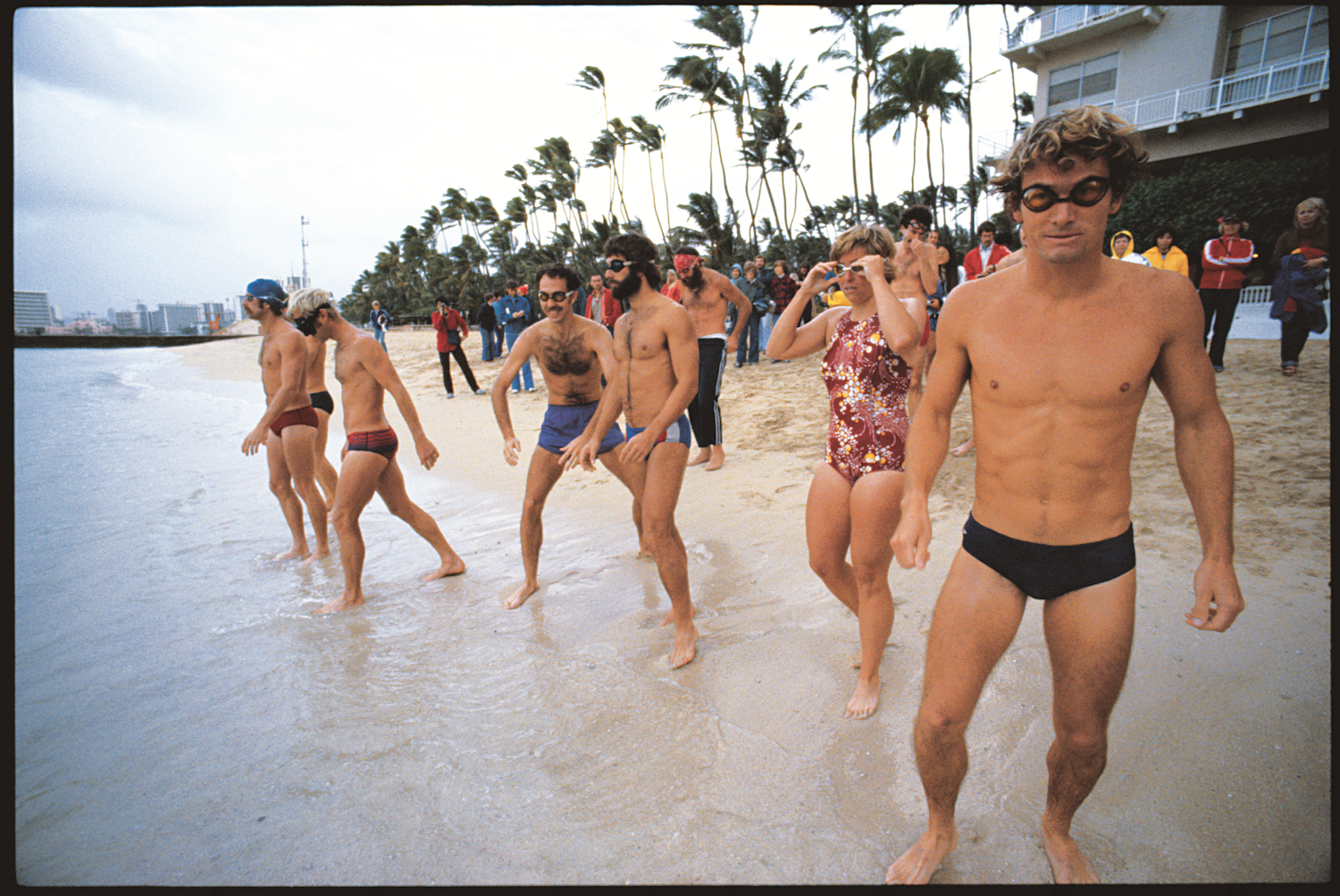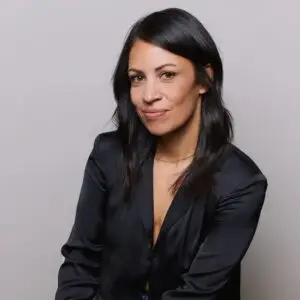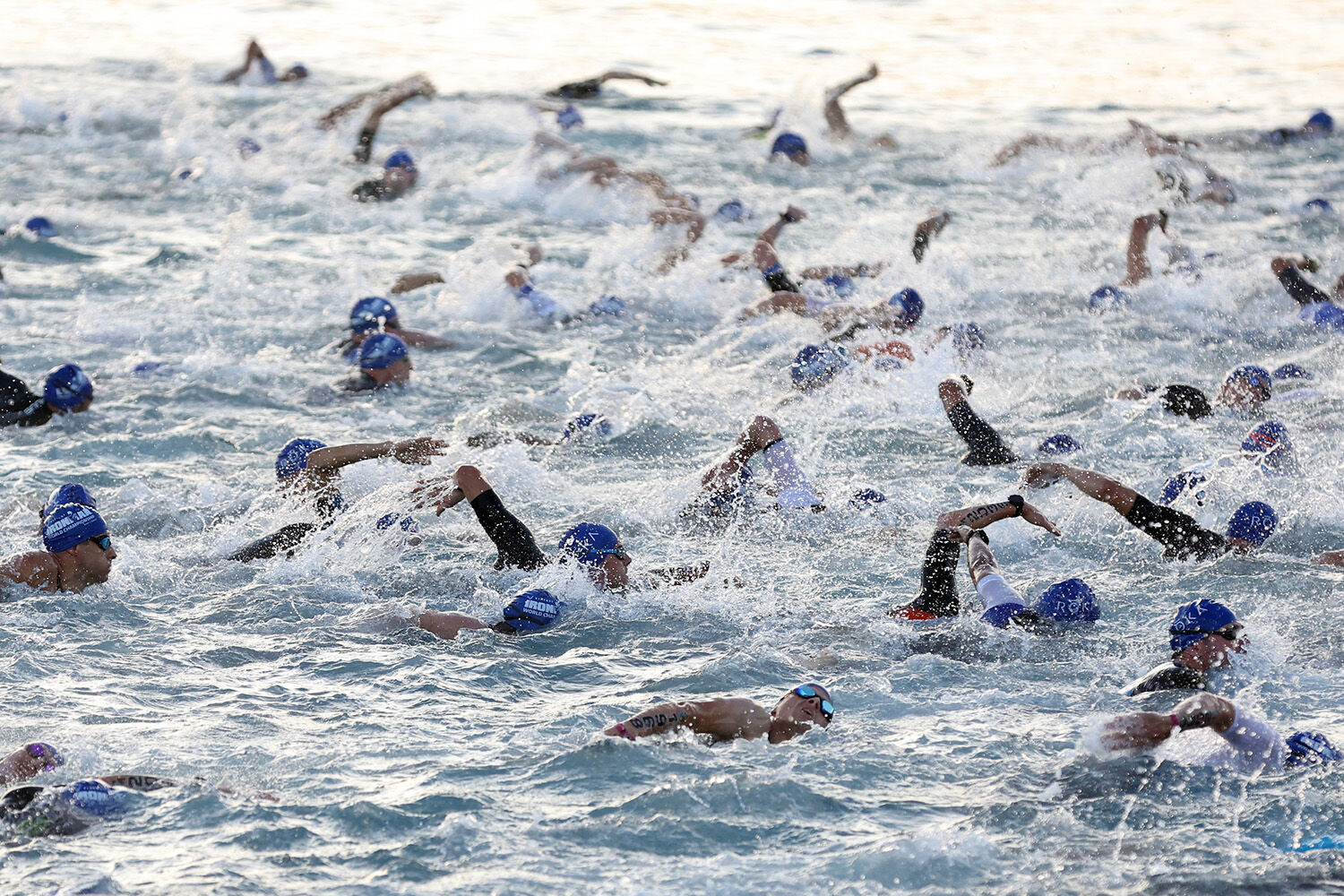
The men’s field kicks off their 140.6-mile journey on day two of the 2022 Ironman World Championship in Kona.
Photo Credit: Ezra Shaw / Getty Images for Ironman
It was the latter part of the 1982 race, the culmination of 140.6 miles of swimming, cycling, and running in Kona, Hawaii. Julie Moss, a 23-year-old lifeguard from San Diego, was exhausted after securing a 20-minute lead ahead of the field. More than 20 million people watched ABC’s Wide World of Sports at home, enrapt with this new competition called Ironman, created only five years earlier by SD residents John Collins, a US Navy commander, and his wife, Judy.
With 10 yards to go, Moss collapsed. Excrement was running down her legs as she scrambled to stand, falling back down every few seconds. As the world watched in anticipation, racer Kathleen McCartney made her way past Moss to the finish, winning the race. She never saw Moss, who eventually placed second on hands and knees.
Moss’ story marked the start of the globe’s obsession with the Collins’ Ironman race. “People were thinking, ‘What is it about that finish line that is so attractive that this woman would crawl and crap herself to get there?’” says Carlsbad local Bob Babbitt, author of 30 Years of the Ironman Triathlon World Championship and a competitor in the event’s third-ever race.
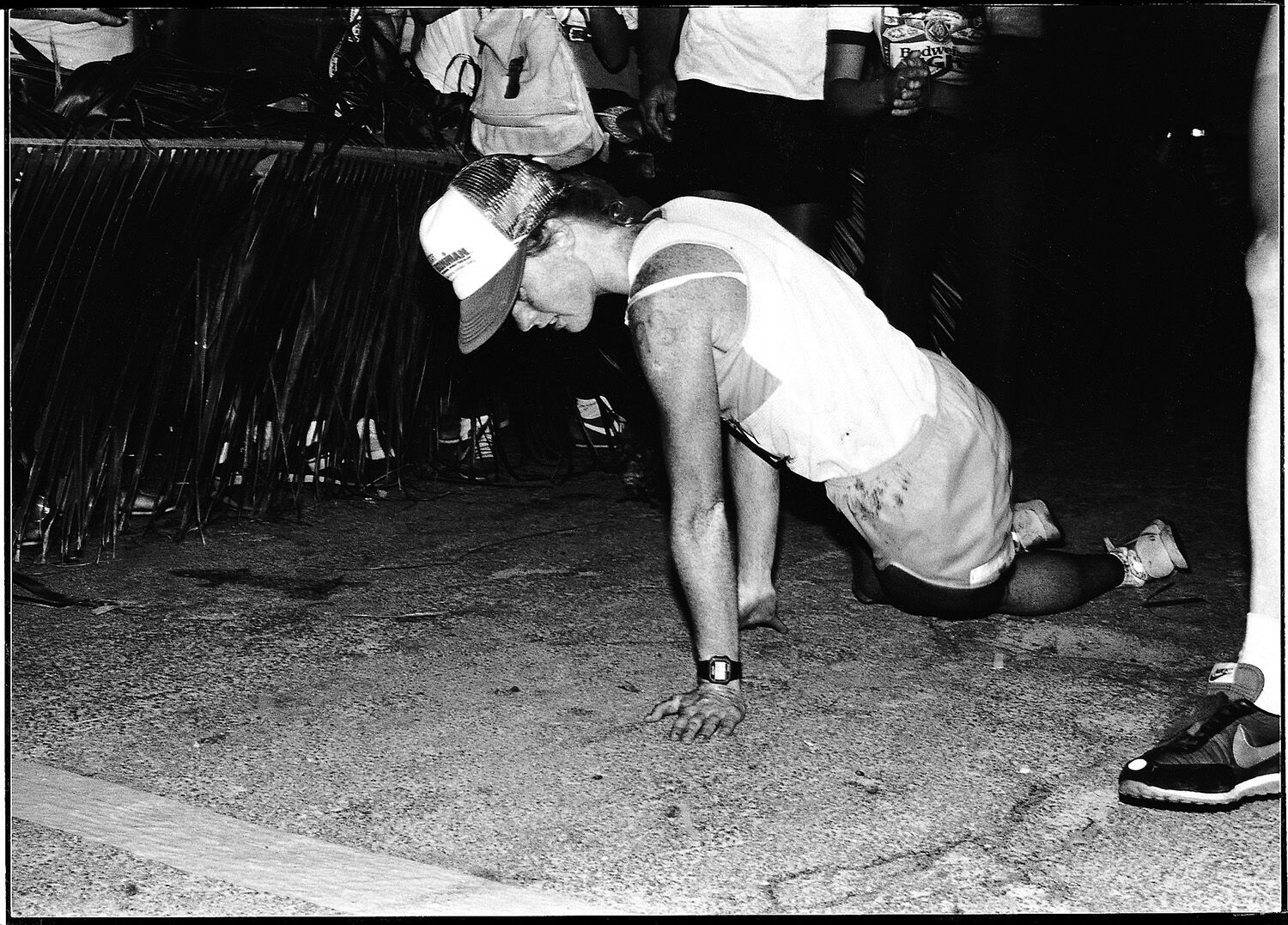
San Diegan Julie Moss crawls to the finish line during the February 1982 Ironman World Championship race.
Photo Credit: Carol Hogan
The idea for Ironman began after John and Judy participated in the inaugural triathlon in 1974 put on by the San Diego Track Club around Mission Bay (the birthplace of the tri). The next year, while stationed in Hawaii, Judy became the first woman to swim from Lanai to Maui, which sparked the idea for creating a longer swim, bike, and run event around the island.
Using three existing races—the Waikiki Roughwater Swim (2.4 mi.), the Around-Oahu Bike Race (115 mi.), and the Honolulu Marathon—she created the Ironman course.
“We had taken up regular exercise in our mid-30s,” says Judy, clarifying that the concept was meant for the average Joe, not elite athletes. “We were not full-time triathletes. We simply enjoyed running and swimming. Actually, John doesn’t like to swim that much.”
The inaugural competition in Oahu included 15 men (Judy didn’t start). Without road closures, aid stations, or bathroom stops along the route, 12 racers finished on February 18, 1978. The winner, Gordon Haller, completed the course in 11 hours, 46 minutes, 58 seconds.
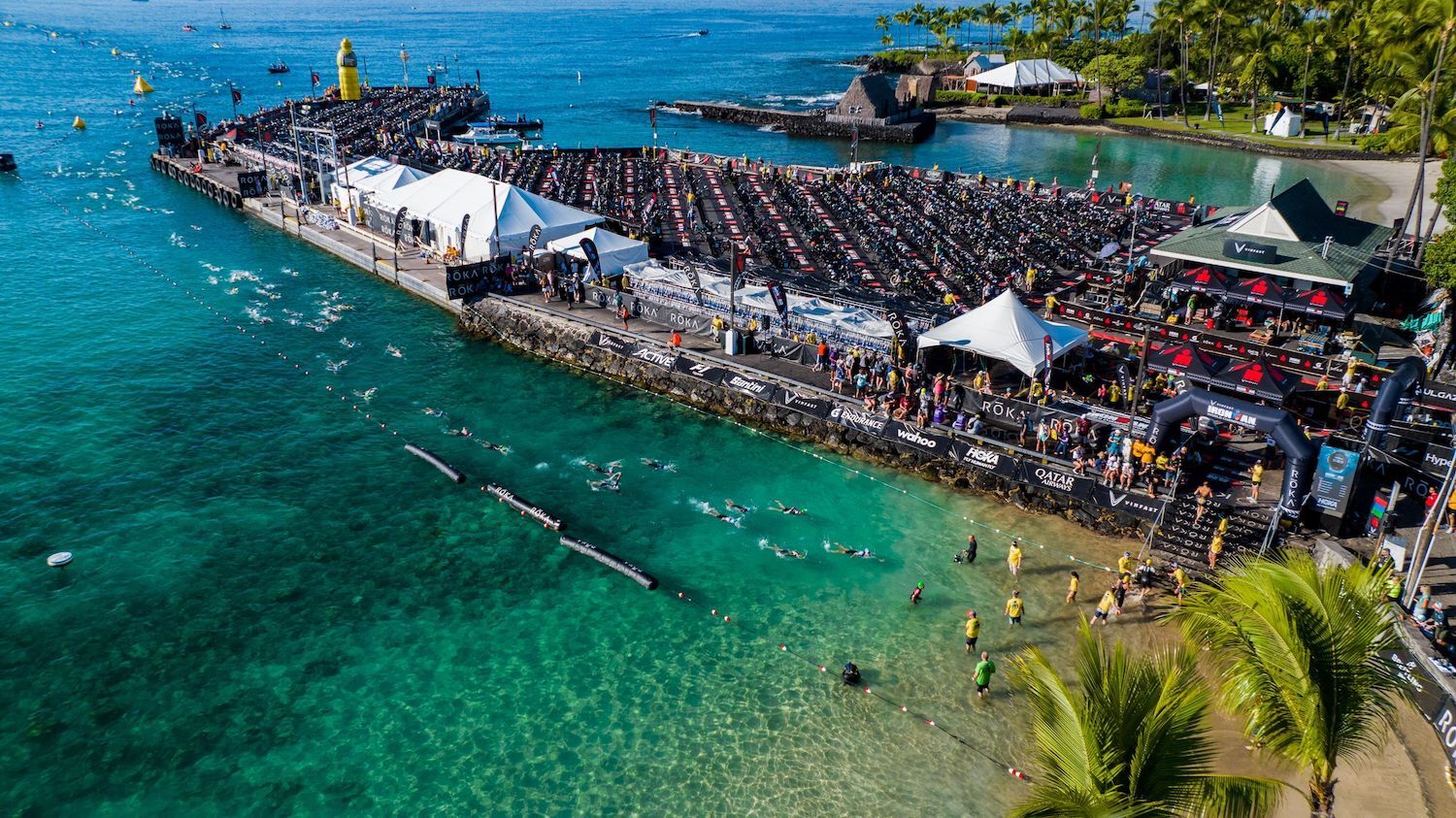
ironman aerial
Photo Credit: Donald Miralle for Ironman
The following year, San Diego local Tom Warren won, shaving around 30 minutes off of Haller’s previous time. Nowadays, with dedicated coaches, sponsors, training guides, and a $750,000 prize purse, winning times are closer to the eight-hour mark
In 1981, Valerie Silk took over the race, moving it to Kona in ’82 and pushing it back to October. Silk’s many changes and savvy are credited for turning the event into what it is today.
When looking into the early days of the long-distance triathlon, what was intriguing was less about how it came to be and more about the people that turned it into a household name.
It’s a story about San Diego and its role in creating the ultimate test of athletic endurance. Take the friendly rivalry between Dave Scott (then, 28) and Mark Allen (then, a 24-year-old graduate of UCSD) which began in 1982.
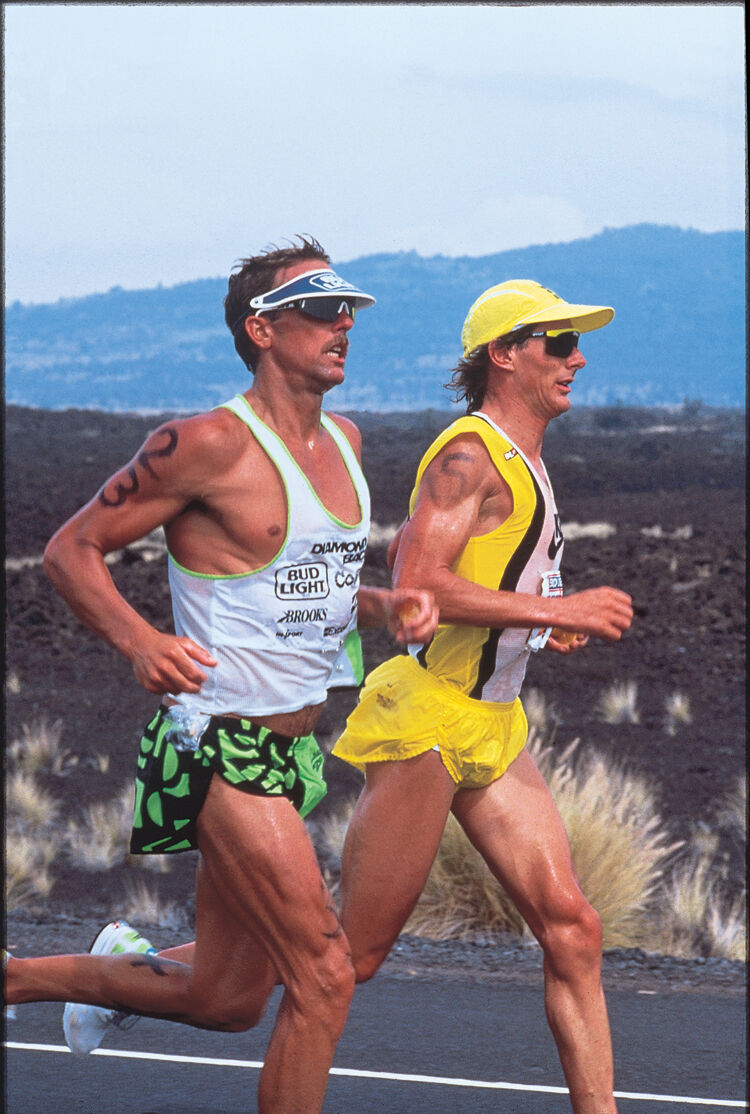
Dave Scott (left) and Mark Allen (right) battle it out in one of the most talked-about races in the sport, dubbed the “Iron War” in 1989.
Photo Credit: Lois Schwartz
“Mark catches Dave on the bike, and this begins the rivalry that lasts the whole decade,” says Babbitt, offering that Scott won that first year. “Then, in ’83, Mark gets third; Dave wins again. In ’84, Mark has a 13-min lead off the bike, blows up. Dave wins; Mark is second.”
It wouldn’t be until 1989 that Allen finally got his victory over Scott. “David turned to grab a glass of some sport drink, and I put five or six feet on him,” says Allen, remembering his late surge. “Suddenly his shoulders come up, and he starts rocking. I’m pulling away in his zip code.”
Allen’s win caused Scott to break his own record by almost 18 minutes. Together, along with Scott Tinley and Scott Molina, they would later become known as the triathlon’s “Big Four.” They dominated the event from the 1980s into the 1990s.
A San Diego native, Tinley is now a professor at SDSU and CSUSM. He lives in Del Mar and has competed in more than 400 triathlons professionally, with two Ironman World Champion wins.
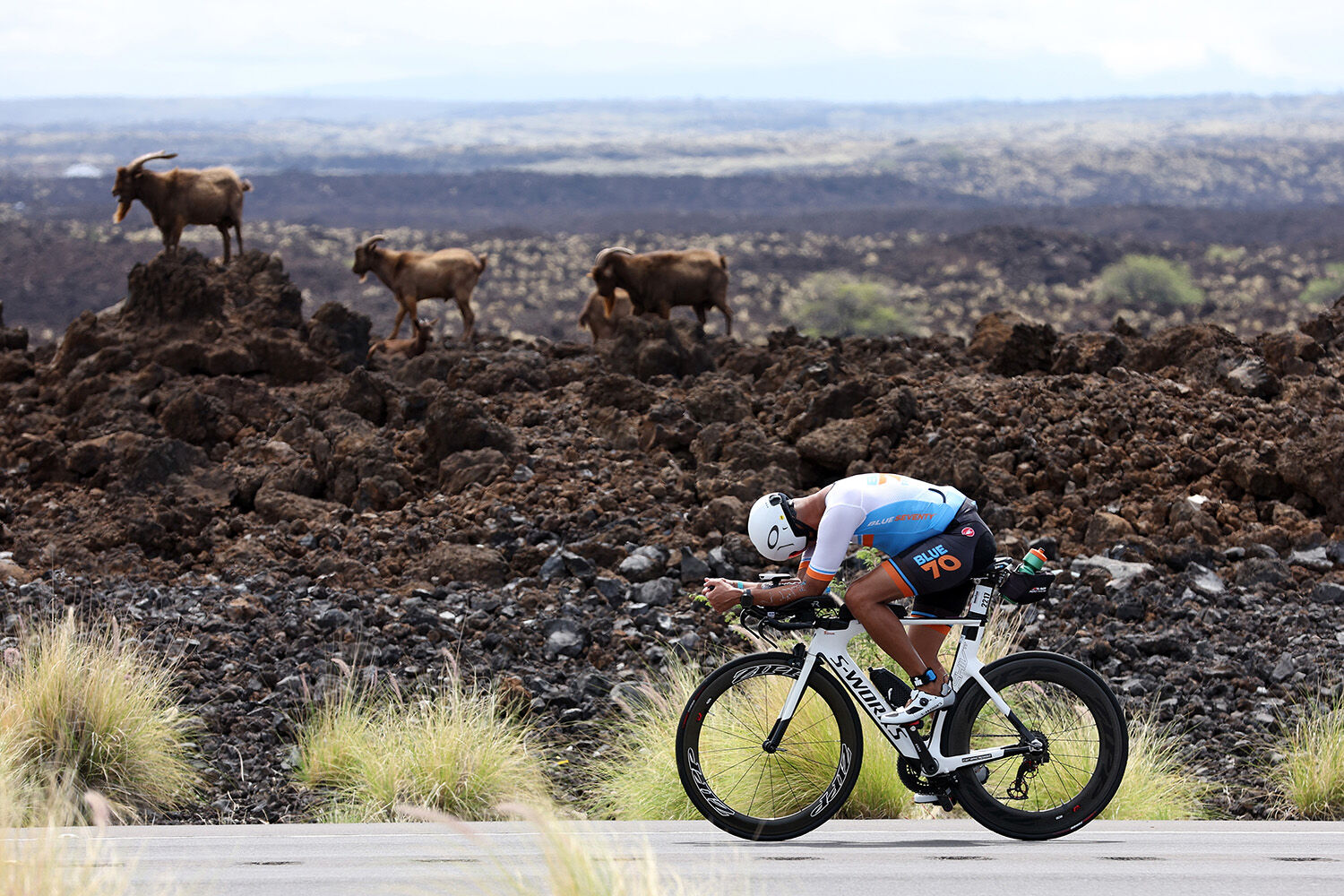
Local goats watch cyclists on the bike course as they make their way across the grueling 112-mile route.
Photo Credit: Tom Pennington / Getty Images for Ironman
“After the ’82 race, we started a training group [in San Diego],” says McCartney. “It was Scott Tinley, Mark Allen, Scott Molina, and others. It was an amazing group of the best athletes in the world.”
McCartney recalls riding through the orange groves on the way to East County‘s Lake Henshaw, running through Rancho Santa Fe, and swimming in La Jolla cove. To this day, the Ironman World Championship is still regarded as one of the most prestigious triathlon events on the globe.
And San Diego continues to be an integral part of its story. In 2012, as part of the selection process for athletes competing at the London Olympic Games, the city hosted the International Triathlon Series races. Oceanside is also home to the 70.3 Ironman held annually in April.
PARTNER CONTENT
Looking back, Moss shares a piece of life advice that she learned after years of Ironman competitions. “Just get to the finish line. It doesn’t matter if it’s pretty or if it’s just the most humiliating moment of your life; get to the finish line,” she says.









